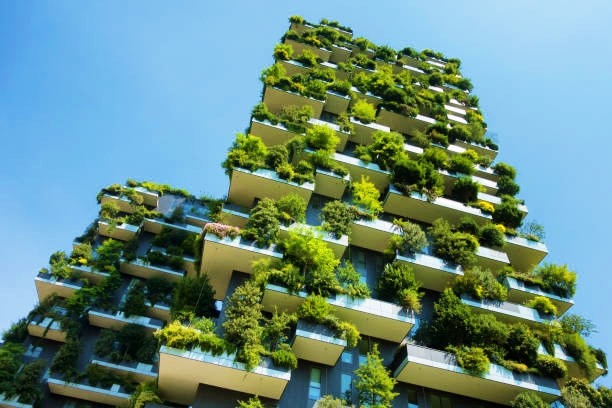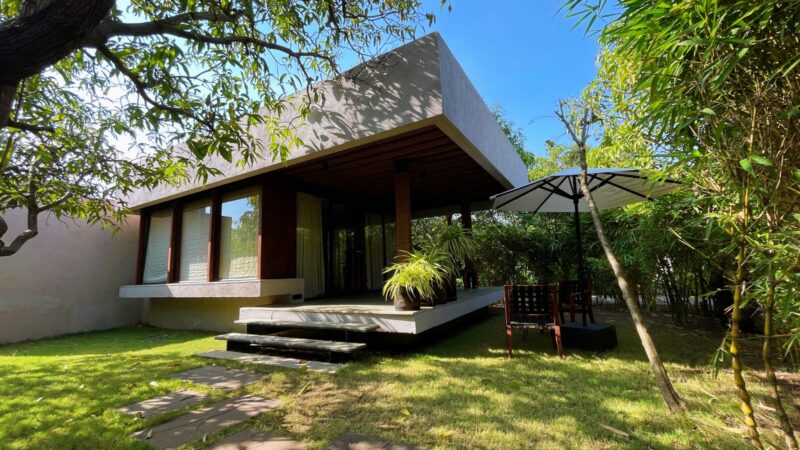What does it take to make bricks and concrete blocks carbon negative?
Sustainable construction is becoming increasingly important as the world seeks to limit its carbon emissions. In particular, reducing the emissions associated with the production of building materials such as bricks and concrete blocks is essential for achieving carbon neutrality. This article will look at the potential strategies to make bricks and concrete blocks carbon negative and the environmental, economic, and social benefits of such construction. It will also identify the challenges and costs associated with carbon-negative construction, as well as the advantages of such techniques.
Table of Contents
The Need for Sustainable Construction
Sustainable construction is becoming increasingly important for businesses, organizations and individuals who are looking to reduce their environmental impact. It is a type of construction that focuses on the use of materials and methods that are more eco-friendly and have the least negative impact on the environment. Sustainable construction materials such as recycled steel, sustainable timber and fly ash instead of traditional materials like concrete and bricks can help reduce energy consumption, reduce water usage and reduce the amount of waste generated during construction.

Sustainable construction also emphasises the use of renewable energy sources such as solar, wind and geothermal energy instead of traditional energy sources such as fossil fuels. Sustainable construction methods can also reduce the amount of carbon dioxide emissions released into the atmosphere, making it an important part of any sustainable development plan. Through the use of sustainable construction, we can make our buildings more efficient, reduce our environmental impact and help to make our planet a better place to live.
How to Make Bricks and Concrete Blocks Carbon Negative
Recent research has highlighted the potential of bricks and concrete blocks to become carbon-negative building materials. As such, strategies to reduce the carbon emissions associated with the production of these materials must be implemented. Potential strategies include using carbon-capturing technologies such as carbon capture and storage (CCS) in the cement production process, substituting cement with other materials such as fly ash, and replacing traditional fuels with biodiesel.
Additionally, recycled materials, such as industrial waste and agricultural by-products, can be used in the production process. Finally, increasing the energy efficiency of production processes and implementing renewable energy sources can reduce the environmental impact of bricks and concrete blocks. Implementing these strategies can help make bricks and concrete blocks more sustainable, and contribute to the development of a carbon-neutral built environment.
Environmental Benefits of Carbon-Negative Construction
Construction is a major contributor to global greenhouse gas (GHG) emissions, so reducing emissions through carbon-negative construction is an essential part of the battle against global climate change. Carbon-negative construction is the process of building structures that draw carbon dioxide from the atmosphere and store it in the building materials. This process can help reduce the impact of climate change by reducing GHG emissions and improving air quality.
In addition to reducing GHG emissions, carbon-negative construction can also have other environmental benefits. For example, it can reduce the amount of energy needed to heat and cool a building by using materials that have high insulation values. This helps to reduce the energy used to heat or cool the building and can decrease the amount of energy needed to power the building. Carbon-negative construction can also help to reduce water use by using materials that absorb and retain moisture, which can help reduce the water needed for landscaping.
By utilizing carbon-negative construction techniques, cities and businesses can help reduce their carbon footprint, improve air quality, and improve the efficiency of their buildings. In the long run, these benefits can lead to a healthier and more sustainable environment for everyone.
Challenges to Implementing Carbon-Negative Techniques
The challenge of transitioning to carbon-negative construction practices is a daunting one. While there are many potential benefits to sustainable construction, such as reducing emissions, conserving resources, and improving the health and safety of building occupants, the cost and complexity of implementing these techniques present a significant challenge.
The commitment to sustainability must be deep and long-term, and the process of developing and implementing new building materials, construction processes, and energy systems is time-consuming and expensive. Additionally, many of the most advanced carbon-negative techniques are still in their infancy and require significant research and development before they can be reliably implemented in real-world scenarios. Despite these challenges, there is great potential to reduce our impact on the environment through sustainable construction and the commitment to carbon-negative techniques is a necessary step in the right direction.
The Cost of Carbon-Negative Construction
Building new structures with a focus on sustainability has become increasingly important in recent years. Carbon-negative construction is at the cutting edge of this movement, intending to reduce CO2 emissions during the construction process. This can be achieved through the use of renewable energy sources, energy-efficient materials, and more efficient construction methods.
While the cost of implementing these measures can be higher upfront, the resulting environmental benefits often outweigh the initial investment. Furthermore, the long-term cost savings associated with carbon-negative construction can be considerable. Investing in sustainable construction today can lead to a cleaner, more profitable tomorrow for businesses and communities alike.
Advantages of Carbon-Negative Construction
Carbon-negative construction is a rapidly growing field in sustainable construction. It focuses on the use of materials and techniques to reduce the amount of greenhouse gas emissions produced in the construction process. Carbon-negative construction offers numerous advantages, including the reduction of the environmental impact of construction activities and the ability to reduce building costs over the long term.
It also allows for the use of renewable and low-carbon materials, and the development of sustainable design features that can promote healthier and more efficient living. In addition, the use of carbon-negative construction techniques can reduce the amount of waste produced during the construction process and help to conserve energy. As a result, carbon-negative construction is an excellent way for builders and architects to contribute to a more sustainable, healthy, and prosperous future.
The need to reduce carbon emissions and build sustainably has never been greater. Implementing carbon-negative techniques in the construction of bricks and concrete blocks is one step we can take to meet this challenge. These techniques have the additional benefits of reducing pollution, improving energy efficiency, and saving money in the long run. Although there are still some challenges to overcome, such as the cost of carbon-negative construction, the advantages offered by implementing these techniques make it a worthwhile endeavour.



